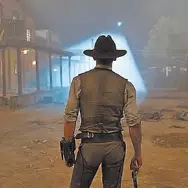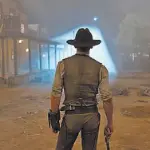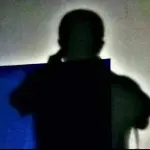From any perspective, or using any theory, discussing or writing about Hou Hsiao-hsien is likely akin to an adventure. It involves navigating through uncharted territories and embracing the unknown in various postures and manners. Because in my understanding, Hou Hsiao-hsien is no longer just a style, a mark of a trend. "Hou Hsiao-hsien" is a method, or even multiple methods, a method of watching films, a method of contemplation, a method of looking back at childhood, a method of experiencing the world, a method of perceiving time. What's more important is that "Hou Hsiao-hsien" is also a method of understanding all these methods. All of the above ultimately hides a premise, that is: "film" must be the practical way of these methods. There are myriad ways for individuals to experience films, and consequently, there exist numerous avenues to articulate these encounters. The following can be regarded as one of them - my personal utilization of three methods to comprehend films through the lens of Hou Hsiao-hsien, which I am sharing with you.
Cinephile’s Roadmap
First of all, how do we encounter the works of Hou Hsiao-hsien?

Some admire the opening scene of the train moving forward in a flickering light and darkness in "Dust in the Wind," paying homage to it, like Jia Zhangke. There are even individuals who venture to Jiufen in Taiwan to seek out the original locations and "recreate" scenes from "A City of Sadness," much like numerous film enthusiasts and backpackers. Some enjoy the retrospective exhibition of Hou Hsiao-hsien's restored works in a crowded theatre, while others refuse to watch "Café Lumière" and instead repeatedly watch "Flowers of Shanghai" on their small screens. Some are lucky enough to meet Hou Hsiao-hsien in person and even collaborate with him, while others are deeply moved and filled with warmth after watching “The Sandwich Man.” Some like "The Puppetmaster" but think "Good Men Good Women" is overrated. Some feel infinite sadness after watching "All the Youthful Days" at a special time and place, but their perception of "Millennium Mambo" is blurred due to the limited screening space. Some only remember the sound of cicadas in “A Summer At Grandpa's”. Some truly began to understand Hou Hsiao-hsien because they liked Hirokazu Koreeda's new film. These examples only touch the surface, and undoubtedly, there are countless diverse encounters and experiences that are even more challenging to compare.

For a period of time, I was enthusiastic about collecting the common words people use to describe watching Hou Hsiao-Hsien's films: too slow, plain, obscure, boring, long, drowsy, hard to fathom; distant, quiet, leisurely, remote, lukewarm, and so on. The interesting aspect lies not in the clear visibility of these two extremes, whether it be admiration or unawareness of the historical context, but in the fact that both sides are invested in describing a sense of "distance." The former is perplexed and even unable to tolerate the film because they cannot "enter" it, while the latter deeply appreciates the beauty of observing and enduring without being able to "enter" or get close. This sense of distance is not absolute, nor is it directly proportional to the so-called "immersion." However, it becomes a way of thinking and a criterion for judgment: does this film allow me to immerse myself in it (what people often refer to as "breaking the fourth wall")? What is the effect of this immersion/"identification"? Am I further or closer to this text, its creator, and the issues it carries?

This "in" or "out" actually implies an internal and external boundary, creating a world of selective Hou Hsiao-hsien-style film experience. One of the important roles of the three words "Hou Hsiao-hsien" is to become a reference for fans to recognize each other's taste and aesthetic judgment. In the specific aesthetic spectrum marked by "Hou Hsiao-hsien," there are too many names that can be mentioned, but Hou is always an undisputed benchmark. From Edward Yang, Tsai Ming-liang, Chang Tso-Chi, Zhang Lü, to Lee Kwang-mo, Hong Sang-soo, Hirokazu Koreeda, and Apichatpong Weerasethakul - The term "Hou Hsiao-hsien-style" not only aids the fan community in creating a kind of "internal pass" as a secret code but also offers and consistently moulds a distinct approach to comprehending films.
Encounter with the Frame
Encounter "Outside the Frame"
When people talk about Hou Hsiao-hsien, they often mention the terms that occupy an important part of the art film spectrum: static shots, long shots, deep focus, and so on. In fact, the essence of the "fixed long shot" is a matter of the "frame". With a sufficiently long lens, the "frame" becomes a relatively static container that showcases and extends the intricate layers of individuals, objects, and space within its scope. However, it must engage with various "frames within frames" to create a dynamic distribution of perspectives. While the camera position remains fixed, the tranquillity of the frozen frame juxtaposes the slightest movements within it. Another crucial aspect that warrants attention is the seemingly enigmatic "outside the frame."

Whether it is in the opening scene of "A City of Sadness", when the new-born baby named "Light" falls to the ground and responds to the "power outage-power recovery", or in "Dust in the Wind", when the children sit around the table eating while Grandpa keeps talking, the off-frame space is expanded through sound and the entry/exit of characters, achieving an imaginative "encounter". Even though Hou Hsiao-hsien's camera remains largely stationary, his intricate layers of "background frames" and "frames within frames" also resonate with various film traditions, not to mention the influence of Ozu. Just look at contemporary directors like Wes Anderson, Michael Haneke, Wong Kar-wai, and the new generation director Zhang Tao ("Laughing to Die"), who are willing to use "frames within frames" to restructure or develop new possibilities for film language and reflect on the medium of film itself.

Movies are essentially an art of "frame". More accurately, the term "frame" here corresponds to frame in English, which can mean "frame", "grid", "picture format", "screen", "frame", or even the composition of an image. The illusion of truth, generated by the flow within the "frame", consists of 24 frames per second.
The encounter between people and movies first takes place within the "frame": it is both the four-sided silver screen that frames the narrative flow and the logical layout within the camera's viewfinder, and moreover, it refers to the complex relationship between the image and the viewer's distance and intimacy. As a methodology, Hou Hsiao-Hsien embodies an aesthetic consciousness that defies the traditional "framework" of filmmaking, establishing his distinct style that transcends this conventional structure. However, this approach has also cultivated a sizable community of film enthusiasts who resonate with this particular aesthetic inclination - they appreciate the many details in the panoramic view, they pay attention to the repeated changes in the depths of the lens, their focus flows within the rich textures of the long shot, they are willing to wait for the events within the "frame" to unfold slowly, and they are more than willing to be tempted by the space outside the “frame".

Meeting People
I have a Japanese friend named K who is an ardent fan of director Hou Hsiao-hsien. Watching movies with him is always a deeply empathetic and immersive experience, especially when we watch films by Hou. For example, during a screening of the restored version of "A Time to Live, a Time to Die" at the famous microcinema in Seattle - known for its miniature art - K, who was sitting on my left, cried throughout the entire 138 minutes. Certainly, the term "cried" doesn't entirely encapsulate his reaction. In truth, his response ranged from being choked up, sobbing, tearing up, to experiencing uncontrollable weeping, all contingent upon different segments of the film. Another companion on this trip was S, a friend from Korea who is also a film enthusiast. Even after viewing "A Time to Live, a Time to Die" more than ten times, he remained completely captivated and profoundly moved by the film. I must confess that sitting between these two individuals, witnessing scene after scene depicting life and death, I felt an overpowering sense of shame, as if my accumulated tears over the years paled in comparison to theirs this time.

What impressed me the most was that during the post-screening discussion, K mentioned that he himself didn't know the reason why he couldn't stop crying. For him, this was clearly a film about various films. He saw another way of expressing childhood through still life shots, inspired by Hirokazu Koreeda 's "I Wish." He also noticed traces of "Muddy River," a film that the three of us admired. He recognized the intricate depth of field composition reminiscent of Edward Yang's "A Brighter Summer Day." Certainly, there were allusions to Hou Hsiao-hsien's "A Time to Live, A Time to Die" in the Korean version titled "Spring, Summer, Fall, Winter... and Spring," directed by Lee Kwang-mo. The film displayed a prolonged single take and exceptional utilization of off-screen space reminiscent of Hou Hsiao-hsien's stylistic elements. This type of "seeing" disrupts the linear logic of time and space, forging connections between different films and fostering unexpected echoes and intertextual links. Subsequently, we discussed our individual childhood experiences and came to the realization that every minute aspect of our childhoods can readily be discovered within films.

Hou Hsiao-hsien's "A Time to Live, a Time to Die" is not only a semi-autobiographical work but also resembles the "greatest common divisor" of memory. Returning to the aesthetics of the "frame," it always simplifies the usual logic of film with a static border, while complicating the space within the frame, providing maximum space and time for each detail to be showcased. It often extends the space outside the frame, further complicating the interplay between the frame and the "frame within a frame."
Watching Hou Hsiao-hsien's films feels like delving into and navigating a memory museum—a colossal repository capable of encapsulating every perceivable detail, evenly distributed but with specific emphasis. Throughout this process, the pivotal aspect lies in the encounters fostered through these details and the manner in which we perceive them. Within the frame, we encounter our own selves. Outside the frame, we are allowed to imagine the film traditions and filmmakers associated with it, personal memories, and familial history. By moving within and beyond the frame, we gain the freedom to perceive and contemplate images, and we encounter companions who can recognize this freedom.


















































Share your thoughts!
Be the first to start the conversation.